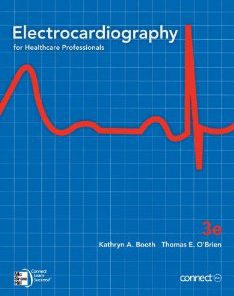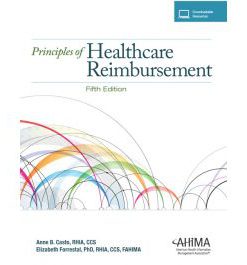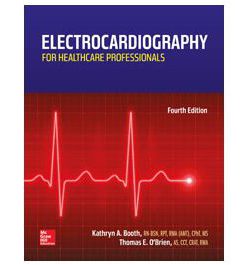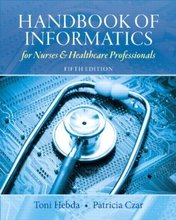Test Bank for Electrocardiography for Healthcare Professionals 5th Edition By Booth
$35.00 Original price was: $35.00.$26.50Current price is: $26.50.
Test Bank for Electrocardiography for Healthcare Professionals 5th Edition By Booth
This is completed downloadable of Test Bank for Electrocardiography for Healthcare Professionals 5th Edition By Booth
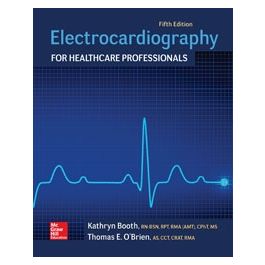
Product Details:
- ISBN-10 : 1260064778
- ISBN-13 : 978-1260064773
- Author: Kathryn Booth (Author), Thomas O’Brien (Author)
Electrocardiography for Health Care Personnel prepares users for a national ECG certification examination, as well as providing ECG skills training for health care students and health care personnel who are interested in mastering additional skills. The text includes the essential skills needed to perform an ECG, including anatomy of the heart, basic characteristics, equipment, appropriate intervention, and other technical applications, such as Holter monitoring and stress testing. Emphasis throughout the text is placed on troubleshooting.
Table of Content:
- Chapter 1 Electrocardiography
- 1.1 The ECG and Its History
- 1.2 Uses of an ECG
- 1.3 Preparing for an ECG
- 1.4 Infection Control
- 1.5 Vital Signs
- Competency Checklists
- 1-1 Measuring Pulse and Respirations
- 1-2 Measuring Adult Blood Pressure
- Chapter 2 The Cardiovascular System
- 2.1 Circulation and the ECG
- 2.2 Anatomy of the Heart
- 2.3 Principles of Circulation
- 2.4 The Cardiac Cycle
- 2.5 Conduction System of the Heart
- 2.6 Electrical Stimulation and the ECG Waveform
- Chapter 3 The Electrocardiograph
- 3.1 Producing the ECG Waveform
- 3.2 ECG Machines
- 3.3 ECG Controls
- 3.4 Electrodes
- 3.5 ECG Graph Paper
- 3.6 Calculating Heart Rate
- Chapter 4 Performing an ECG
- 4.1 Preparation for the ECG Procedure
- 4.2 Communicating with the Patient
- 4.3 Safety
- 4.4 Applying the Electrodes and Leads
- 4.5 Operating the ECG Machine
- 4.6 Checking the ECG Tracing
- 4.7 Reporting ECG Results
- 4.8 Equipment Maintenance
- 4.9 Pediatric ECG
- 4.10 Cardiac Monitoring
- 4.11 Special Patient Considerations
- 4.12 Handling Emergencies
- Competency Checklists
- 4-1 Recording an Electrocardiogram
- 4-2 Continuous Cardiac Monitoring
- Chapter 5 Rhythm Strip Interpretation and Sinus Rhythms
- 5.1 Rhythm Interpretation
- 5.2 Identifying the Components of the Rhythm
- 5.3 Rhythms Originating from the Sinus Node
- 5.4 Sinus Bradycardia
- 5.5 Sinus Tachycardia
- 5.6 Sinus Dysrhythmia
- 5.7 Sinus Arrest
- 5.8 Sinus Exit Block
- Chapter 6 Atrial Dysrhythmias
- 6.1 Introduction to Atrial Dysrhythmias
- 6.2 Premature Atrial Complexes
- 6.3 Wandering Atrial Pacemaker
- 6.4 Multifocal Atrial Tachycardia
- 6.5 Atrial Flutter
- 6.6 Atrial Fibrillation
- Chapter 7 Junctional Dysrhythmias
- 7.1 Introduction to Junctional Dysrhythmias
- 7.2 Premature Junctional Complex (PJC)
- 7.3 Junctional Escape Rhythm
- 7.4 Accelerated Junctional Rhythm
- 7.5 Junctional Tachycardia
- 7.6 Supraventricular Tachycardia (SVT)
- Chapter 8 Heart Block Dysrhythmias
- 8.1 Introduction to Heart Block Dysrhythmias
- 8.2 First Degree Atrioventricular (AV) Block
- 8.3 Second Degree Atrioventricular (AV) Block, Type I (Mobitz I or Wenckebach)
- 8.4 Second Degree Atrioventricular (AV) Block, Type II (Mobitz II)
- 8.5 Third Degree Atrioventricular (AV) Block (Complete)
- Chapter 9 Ventricular Dysrhythmias
- 9.1 Introduction to Ventricular Dysrhythmias
- 9.2 Premature Ventricular Complexes (PVCs)
- 9.3 Agonal Rhythm
- 9.4 Idioventricular Rhythm
- 9.5 Accelerated Idioventricular Rhythm
- 9.6 Ventricular Tachycardia
- 9.7 Ventricular Fibrillation
- 9.8 Asystole
- Chapter 10 Bundle Branch Block
- 10.1 Introduction to Bundle Branch Block Dysrhythmias
- 10.2 LBBB vs. RBBB
- Chapter 11 Pacemaker Rhythms
- 11.1 Introduction to Pacemakers
- 11.2 Evaluating Pacemaker Function
- 11.3 Pacemaker Complications Relative to the ECG Tracing
- Competency Checklists
- 11-1 Pacemaker Evaluation
- Chapter 12 Cardiac Stress Testing
- 12.1 Cardiac Stress Testing
- 12.2 Why Is Exercise Electrocardiography Used?
- 12.3 Other Types of Cardiac Stress Testing
- 12.4 Preparing the Patient for Exercise Electrocardiography
- 12.5 Providing Safety
- 12.6 Performing Exercise Electrocardiography
- 12.7 Common Protocols
- 12.8 After Exercise Electrocardiography
- Competency Checklists
- 12-1 Assisting with Exercise Electrocardiography (Stress Testing)
- Chapter 13 Ambulatory Monitoring
- 13.1 Ambulatory Monitoring
- 13.2 How Is Ambulatory Monitoring Used?
- 13.3 Types of Ambulatory Monitoring
- 13.4 Educating the Patient
- 13.5 Preparing the Patient
- 13.6 Applying an Ambulatory Monitor
- 13.7 Removing an Ambulatory Monitor and Reporting Results
- Competency Checklists
- 13-1 Applying and Removing an Ambulatory (Holter) Monitor
- Chapter 14 Clinical Presentation and Management of the Cardiac Patient
- 14.1 Coronary Arteries
- 14.2 Cardiac Symptoms
- 14.3 Atypical Patient Presentation
- 14.4 Acute Coronary Syndrome
- 14.5 Heart Failure
- 14.6 Cardiac Patient Assessment and Immediate Treatment
- 14.7 Treatment Modalities for the Cardiac Patient
- Competency Checklists
- 14-1 Immediate Care for a Cardiac Patient
- Chapter 15 Basic 12-Lead ECG Interpretation
- 15.1 The Views of a Standard 12-Lead ECG and Major Vessels
- 15.2 Ischemia, Injury, and Infarction
- 15.3 Electrical Axis
- 15.4 Left Ventricular Hypertrophy
- Appendix A Cardiovascular Medications
- Appendix B Standard and Isolation Precautions
- Appendix C Medical Abbreviations, Acronyms, and Symbols
- Appendix D Anatomical Terms
- Appendix E Identifying Components of ECG Strips
- Glossary
- Index
People Also Search:
electrocardiography for healthcare professionals 5th edition by booth
electrocardiography for healthcare professionals 5th edition by booth test bank download pdf
electrocardiography for healthcare professionals 5th edition by booth download scribd
You may also like…
Test Bank
Test Bank for Math and Dosage Calculations for Healthcare Professionals 5th Edition by Booth
Test Bank
Test Bank for Math and Dosage Calculations for Healthcare Professionals, 4th Edition: Booth
Test Bank
Handbook of Informatics for Nurses and Healthcare Professionals Hebda 5th Edition Test Bank




